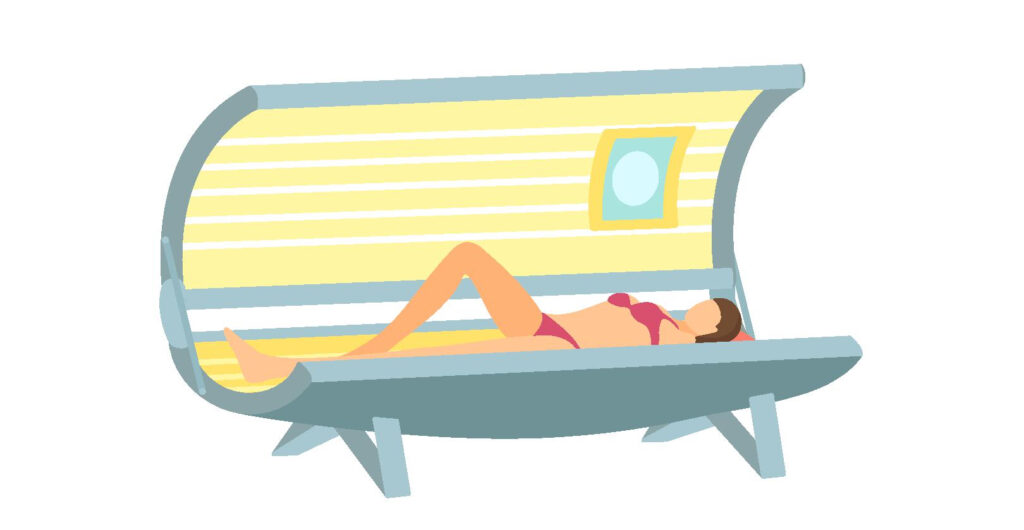 “As a parent, talking to your teen about the dangers of tanning and the importance of sun safety may feel like a daunting task,” says Dr. Adam Mamelak, dermatologist and skin cancer expert in Austin. However, open and honest conversations can empower your teen to make informed choices about their skin health and reduce their risk of skin cancer later in life.
“As a parent, talking to your teen about the dangers of tanning and the importance of sun safety may feel like a daunting task,” says Dr. Adam Mamelak, dermatologist and skin cancer expert in Austin. However, open and honest conversations can empower your teen to make informed choices about their skin health and reduce their risk of skin cancer later in life.
Understanding the Risks of Tanning:
Before initiating the conversation with your teen, it’s essential to educate yourself about the risks of tanning and its impact on skin health. Armed with accurate information, you can effectively convey the seriousness of the issue and emphasize the importance of sun safety.
Strategies for Talking to Your Teen:
1. Choose the Right Moment: Find a time when your teen is relaxed and receptive to having a conversation. Avoid bringing up the topic during moments of conflict or stress.
2. Be Honest and Direct: Clearly communicate the risks associated with tanning, including skin cancer, premature aging, and sunburn. Use straightforward language and provide factual information supported by reputable sources.
3. Share Personal Stories: Share personal anecdotes or stories about individuals who have experienced the harmful effects of tanning or skin cancer. Personalizing the conversation can make the risks more relatable to your teen.
4. Encourage Questions: Create a safe space for your teen to ask questions and express their concerns. Encourage an open dialogue and address any misconceptions or uncertainties they may have about tanning.
5. Highlight Positive Alternatives: Emphasize the importance of sun-safe behaviors, such as wearing sunscreen, seeking shade, and wearing protective clothing. Frame sun protection as a positive and empowering choice for maintaining healthy skin.
Tips for Encouraging Sun-Safe Behaviors:
1. Lead by Example: Model sun-safe behaviors yourself and demonstrate the importance of wearing sunscreen and protecting your skin from UV radiation.
2. Make Sunscreen Routine: Incorporate sunscreen into your teen’s daily routine by providing them with their own sunscreen and encouraging consistent application, especially before outdoor activities.
3. Provide Sun-Protective Clothing: Invest in sun-protective clothing, such as wide-brimmed hats, sunglasses, and lightweight long-sleeved shirts, to help your teen stay protected while outdoors.
4. Limit Tanning Opportunities: Set boundaries around indoor tanning and discourage participation in tanning bed sessions. Educate your teen about the dangers of indoor tanning and the increased risk of skin cancer associated with artificial UV radiation.
Educating About the Dangers of Indoor Tanning:
1. Discuss Health Risks: Explain the health risks associated with indoor tanning, including an increased risk of skin cancer, premature aging, and eye damage.
2. Share Statistics: Share statistics and research findings about the link between indoor tanning and skin cancer, emphasizing the heightened risk among adolescents and young adults.
3. Highlight Alternatives: Encourage your teen to explore safer alternatives for achieving a tan, such as sunless tanning products or bronzing lotions, which do not involve exposure to harmful UV radiation.
Conclusion: Empowering Your Teen to Make Informed Choices
Having the tanning talk with your teen may require patience, empathy, and persistence, but it’s a critical step in promoting their skin health and overall well-being. By engaging in open conversations, providing factual information, and encouraging sun-safe behaviors, you can empower your teen to prioritize their skin health and make informed choices that will benefit them for years to come. Remember, the conversations you have today can have a lasting impact on your teen’s future health and happiness.
